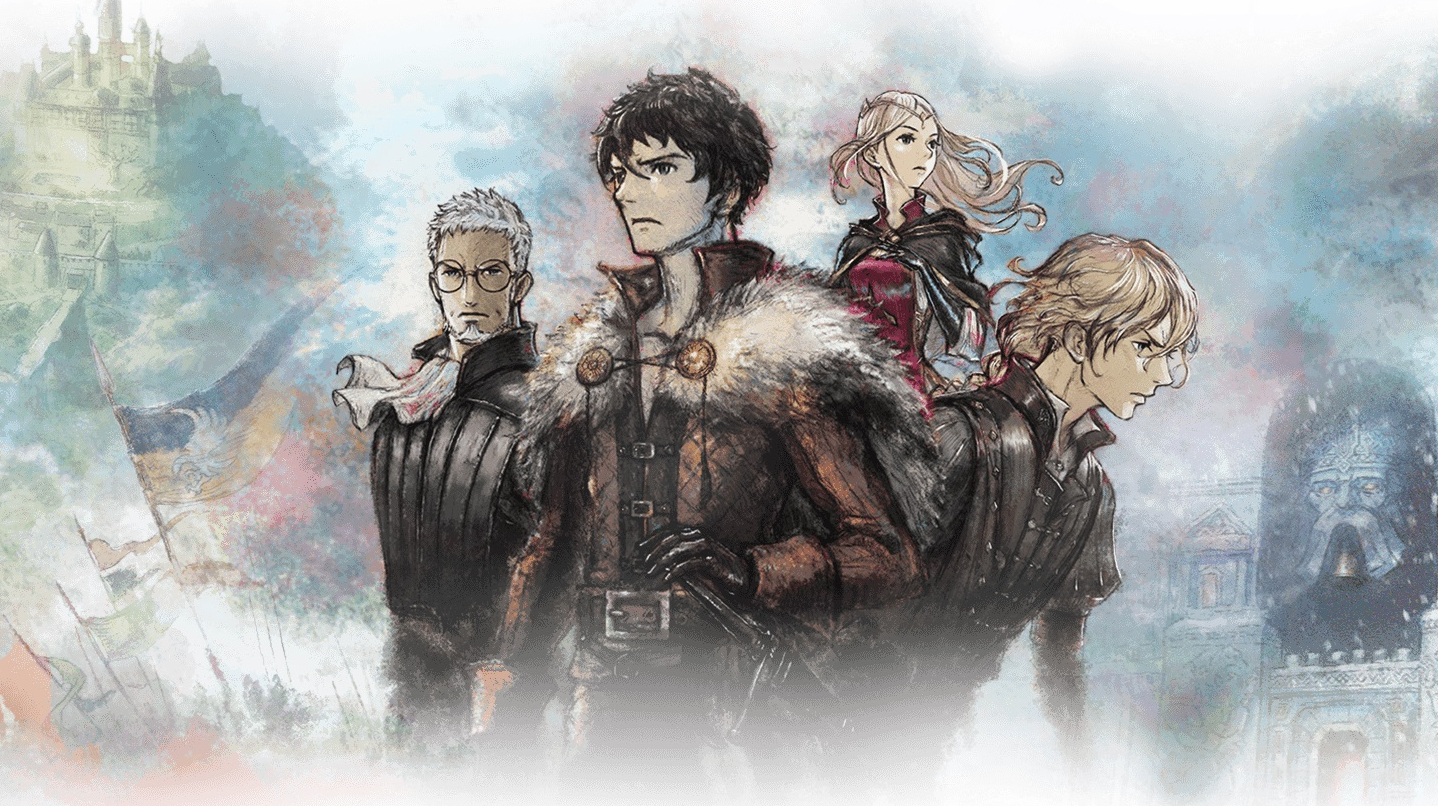
In one chapter, I knew an ambush was likely waiting in the wings for my party, and I had the opportunity to walk around the area. Those are some of my favorite moments in Triangle Strategy, where it starts to show where it builds upon previous ideas. These parts let me roam around a bit, talking to companions and picking up resources.

Story happens either in dialogues, which play out like the sort of story scenes you’d normally see in an old-school tactics RPG, or in exploration. It’s a good one too, especially when it takes time to narrow in on characters, like the tension of Frederica and Serenoa’s betrothal after Aesfrost invades, or how Roland handles the mounting pressures the world puts on him. It’s a political story, one that so far has centered on human enemies rather than the mystical or fantastic.

Aesfrost senses a moment of weakness and strikes, leaving the world in disarray. While all seems peaceful at first, it’s not long until war breaks out again.

Joining him are his advisor Benedict, best friend and Glenbrook prince Roland, and a small group of supporting characters. He’s set to be wed to Frederica, part of the royal family of rival nation Aesfrost and half-sister to its Archduke. The player takes on the role of Serenoa, the heir of House Wolffort, one of the high houses of Glenbrook. It’s a war story, centering on the tensions between several nations trying to rebuild after a costly war over precious resources. Triangle Strategy‘s story elements have been what struck me the most by surprise so far though. Though Triangle Strategy is heavy on story, the battles are always ready and waiting with just a few button presses. Progression also feels like it happens at a good cadence, bolstered by the ability to run “mental battles” at the tavern in your camp to earn experience and materials for upgrading stats. The map size usually keeps there from being too many turns spent just closing the distance, and story scenarios have kept the fighting centered on focal points around the field. A Scorch spell could take out an enemy unit, but then it would melt the ice underneath my neighboring ally, weakening them to the lightning magic of an enemy mage.īattles are not too time-consuming, though some definitely feel like a stretched back-and-forth. Magic starts out as a basic cross-shaped fireball, but then it starts to have terrain implications and interactions with other magic. Triangle Strategy lays a solid foundation and then builds up and out. And then there’s characters that can lay traps, loot more coins, or give more actions to others. Maybe a new archer does more damage the further they are from the enemy. But then you might later recruit a healer who’s also a mounted warrior, or focuses on healing items rather than magic. She gets direct heals and some buffing abilities. The first healer you’ll get is Geela, who fills the “white mage” role. Each character has their own class, allowing them to be more narrowly defined while still fitting within the broad strokes of certain playstyles. You can attack an enemy, and get a follow-up hit from an ally if they’re on the opposite side of the target. The first units you use are mostly carrying swords, spears, and some basic magic. In the first few battles, Triangle Strategy seems fairly simplistic. Battles take place on a “board” of sorts on top of the world map, a pleasant aesthetic touch, and units take turns moving around the field and using abilities, metered out by points they accumulate turn-over-turn.

The core of Triangle Strategy is exactly what you expect: a turn-based tactical RPG. But the way it balances between approachability and difficulty, between its story and tense battles, and characters that live on and off the field are something worth experiencing. I’m still feeling my way through the expanse of Triangle Strategy‘s tactics, both on and off the field. There are bits and pieces of many past entries in the tactics genre, and it combines them in novel, interesting ways, while molding in its own spins on both the battles and stories being told. It will introduce something familiar, then swerve at just the right angle to make it fresh again. Triangle Strategy feels old and new at the same time. It’s where Square Enix and Artdink build on top of the pillars, adding their own touches and twists, that you start to see hints of it becoming much greater. It certainly does enough to be a good tactics game in its own right. And indeed, Triangle Strategy feels immediately familiar to anyone who’s played a tactics game in the past.


 0 kommentar(er)
0 kommentar(er)
